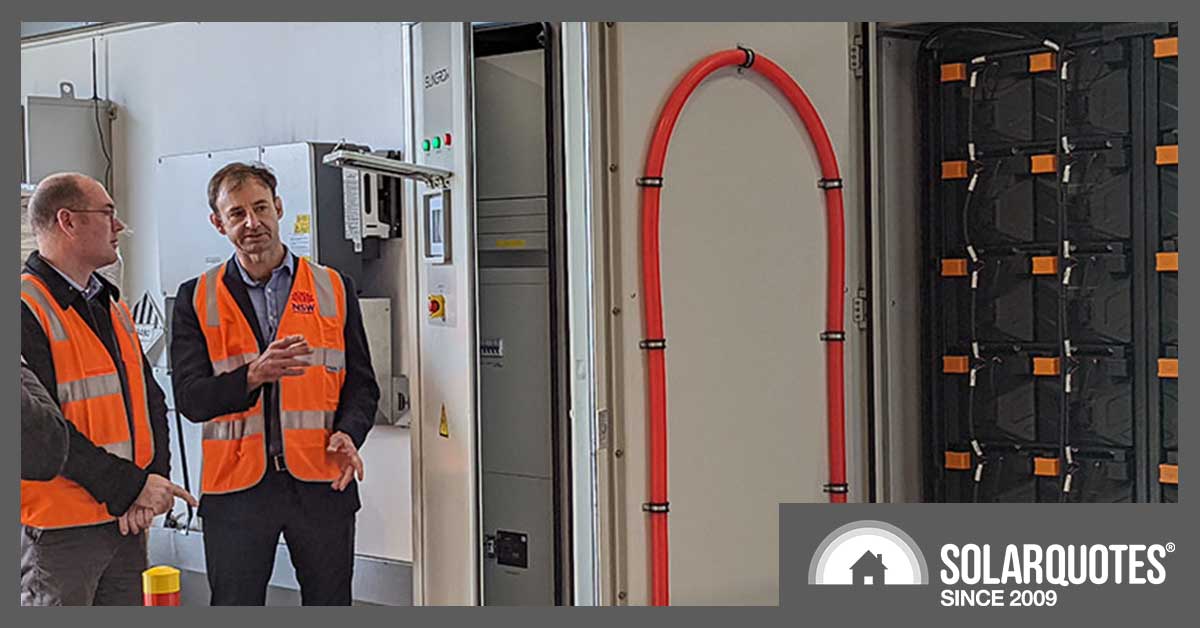
Image: Property and Development NSW
In March, we covered the launch of a big battery at Port Macquarie Base Hospital, which was installed as part of the NSW state government’s Smart Batteries for Key Government Buildings initiative.
That initiative has, fairly quietly, been rolling batteries out at various state government sites, including schools, hospitals, and other state government buildings with existing rooftop solar panel installations.
In 2020/2021, it covered 355 kWh of battery installations in seven schools, and 14 systems were purchased for Property NSW locations.
And as this contract notice published last week shows, the state government is about to begin work on another 16 sites, with Shell Energy1 as prime contractor.
The contract notice doesn’t identify which locations are covered by this contract, but a spokesperson for Property and Development NSW (PDNSW) told SolarQuotes batteries have also been rolled out to 13 regional NSW government offices: Albury, Armidale, Bathurst, Cootamundra, Griffith, Goulburn, Gunnedah, Grafton, Inverell, Lithgow, Moree, Orange, and Parkes.
“Batteries will also be installed by the end of June at offices in Bathurst and Nowra”, the spokesperson said.
Sungrow Batteries For The Win
From the publicity photos, it looks like at least some of the installations use commercial Sungrow batteries paired with Sungrow inverters. Sungrow recently won ‘Best Value Batteries‘ and ‘Best Value Inverters‘ as voted by solar installers in the SolarQuotes network. It’s good to see the government being careful with your money.
VPP on the Way
That’s not all: the batteries are ultimately to become part of a virtual power plant (VPP).
As a pilot, the VPP will be able to feed as much as 1,280 kWh of energy back into the grid during demand peaks, ultimately reducing PDNSW’s emissions by 124 tonnes of carbon annually.
As well as helping stabilise the grid, the batteries will reduce peak demand charges for NSW’s office buildings.
As explained here: a Virtual Power Plant is a straightforward proposition, as we explain here: Distributed Energy Resources (DERs) are co-ordinated by a central VPP operator that releases some (or all) of the batteries’ stored energy into the grid during periods of peak demand when wholesale electricity prices are high.
That can have downsides for householders because battery charging is under control of the VPP operator, who may not always act in the best interests of the customer.
However, in this case, the NSW state government will operate as its own VPP, managing charging, discharging, and tariffs for its own benefit.
Footnotes
- yes – as in the oil and gas company ↩

 RSS - Posts
RSS - Posts



Speak Your Mind